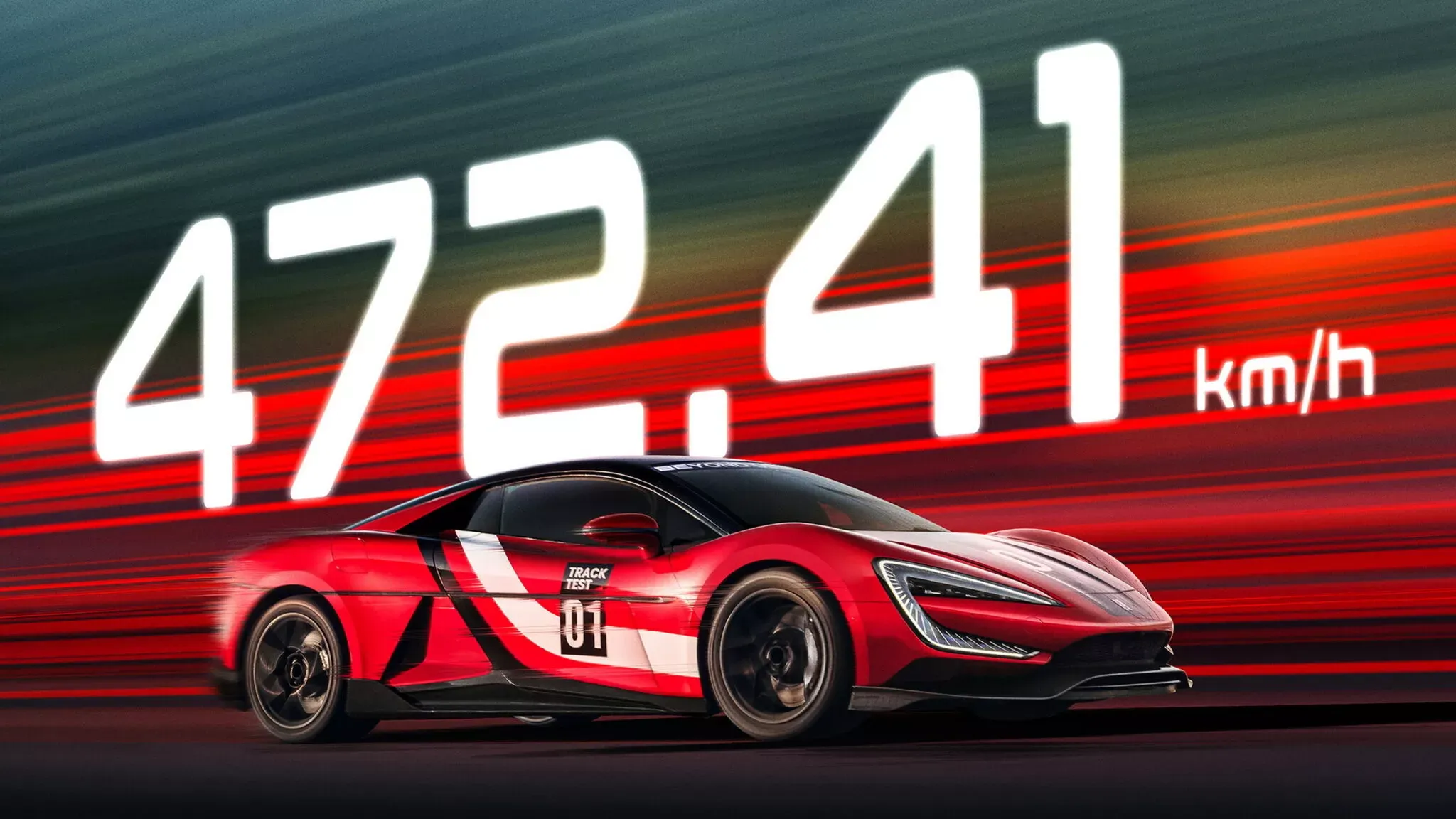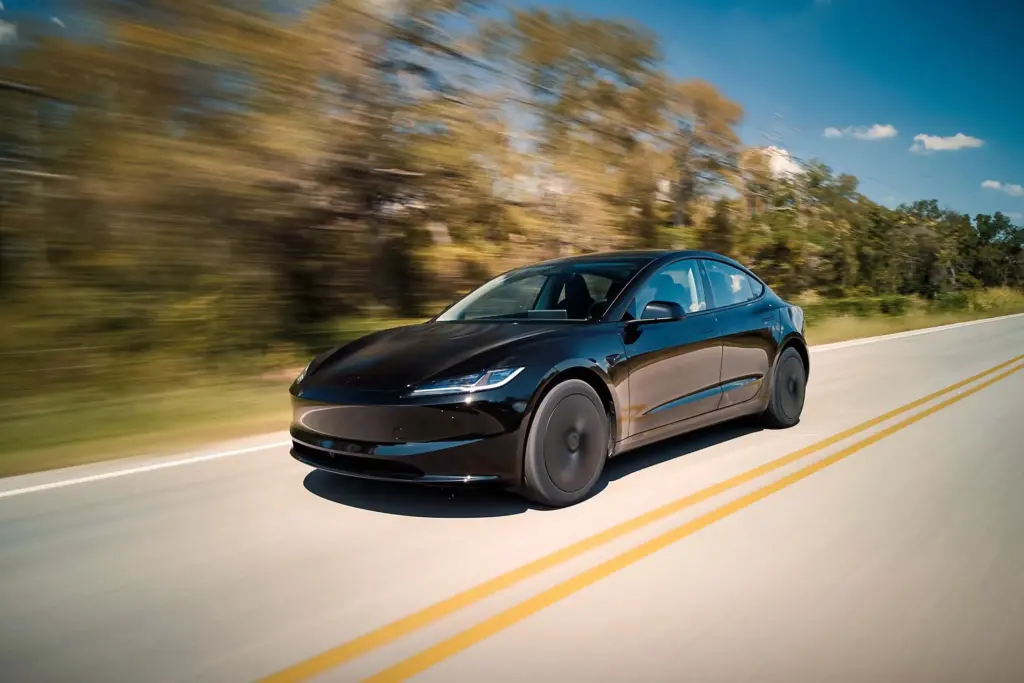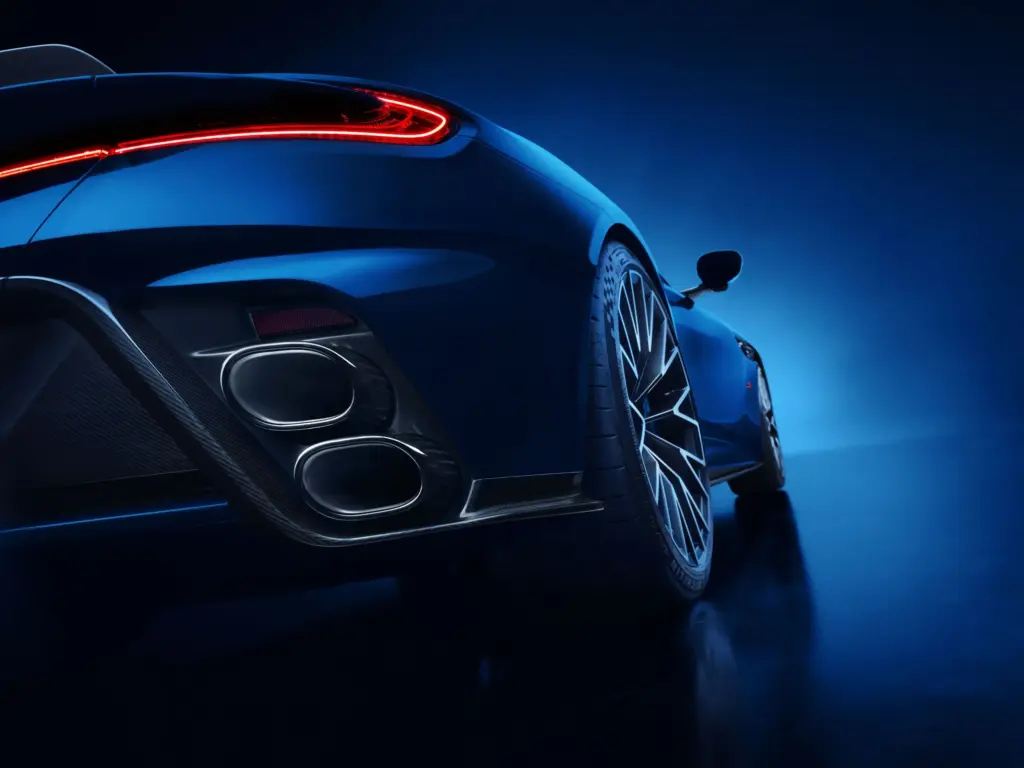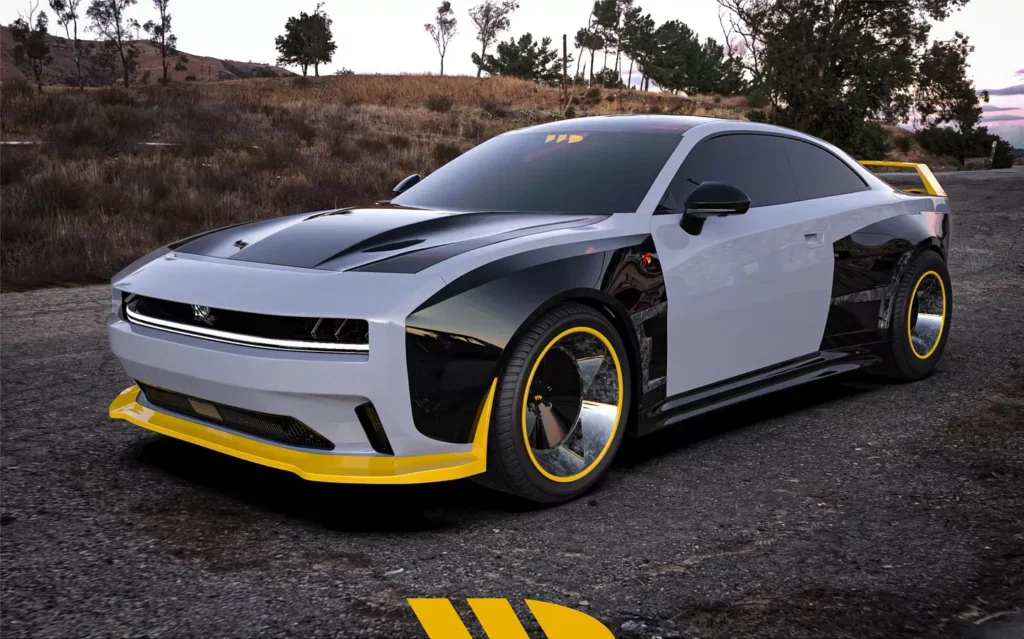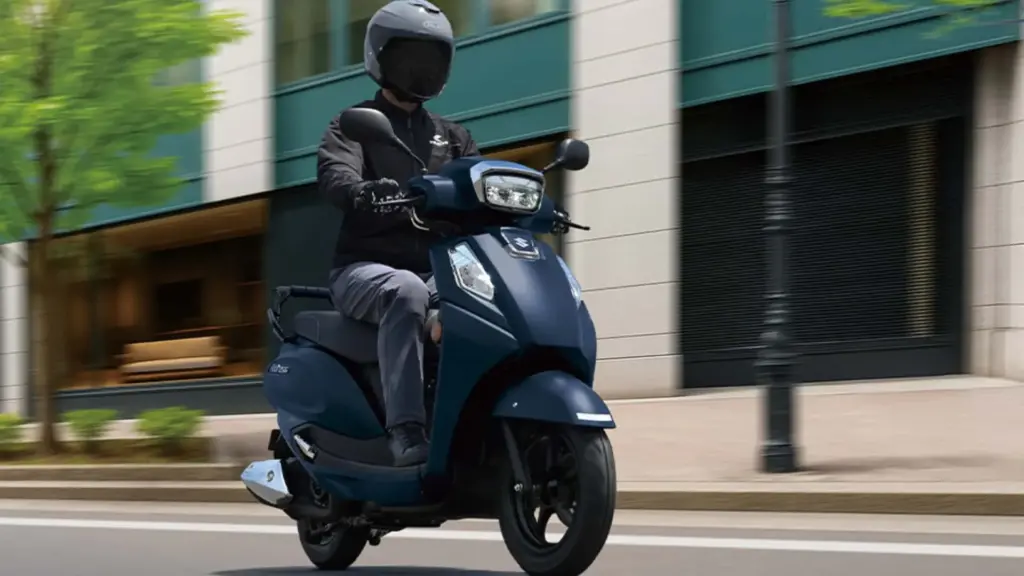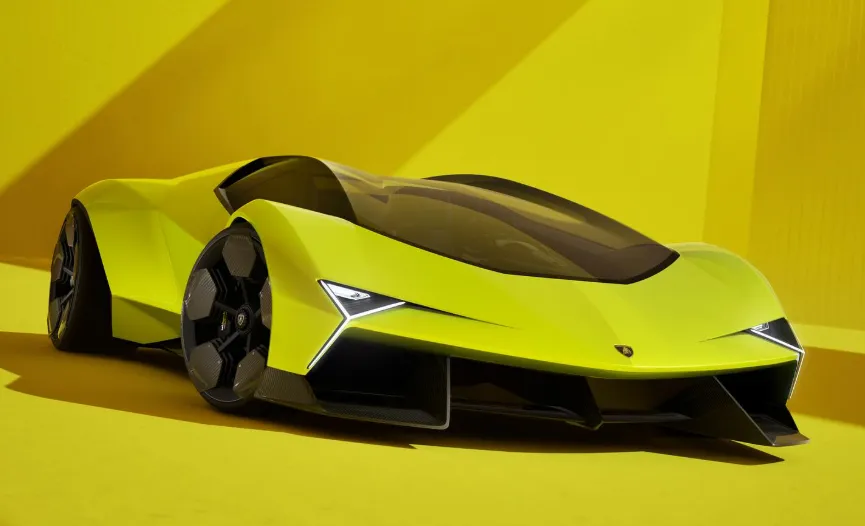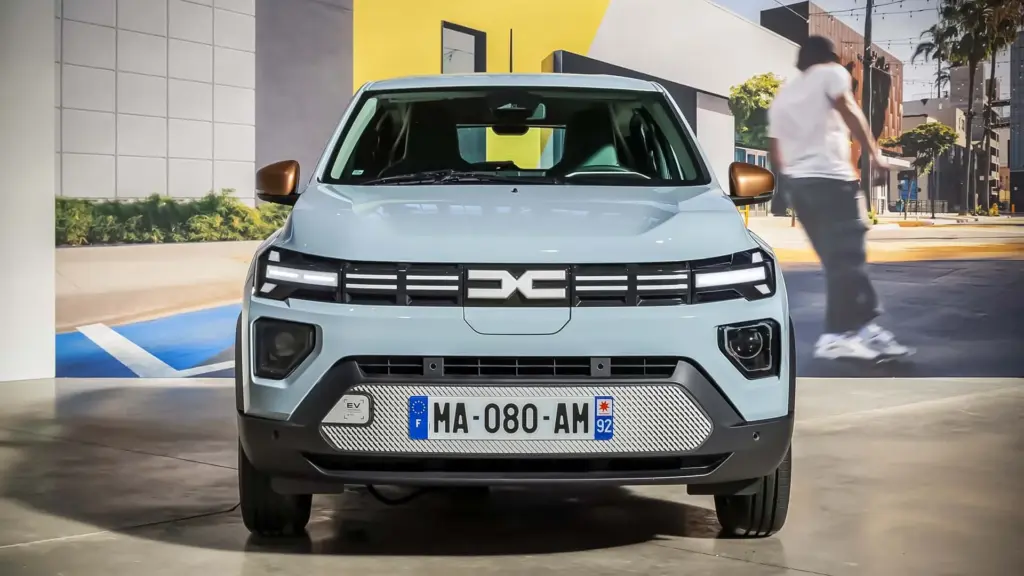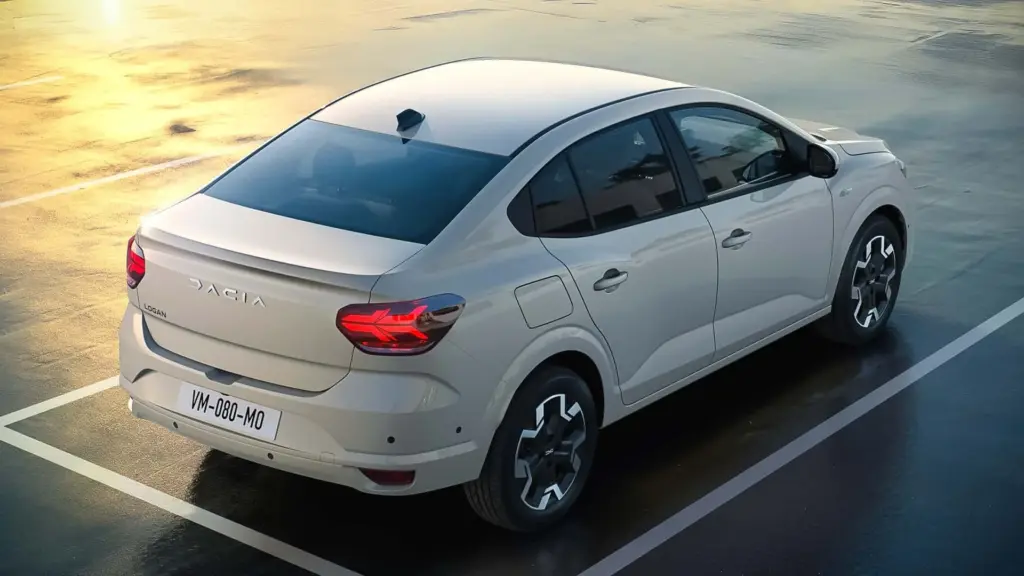472.41 mph. This is the new speed record for a production electric vehicle in engineering testing: the BYD Yangwang U9 Track Edition demonstrated what a four-motor, 1200V EV can achieve. Here’s what matters next: how it got there, what changes in driving physics, and who loses the throne.
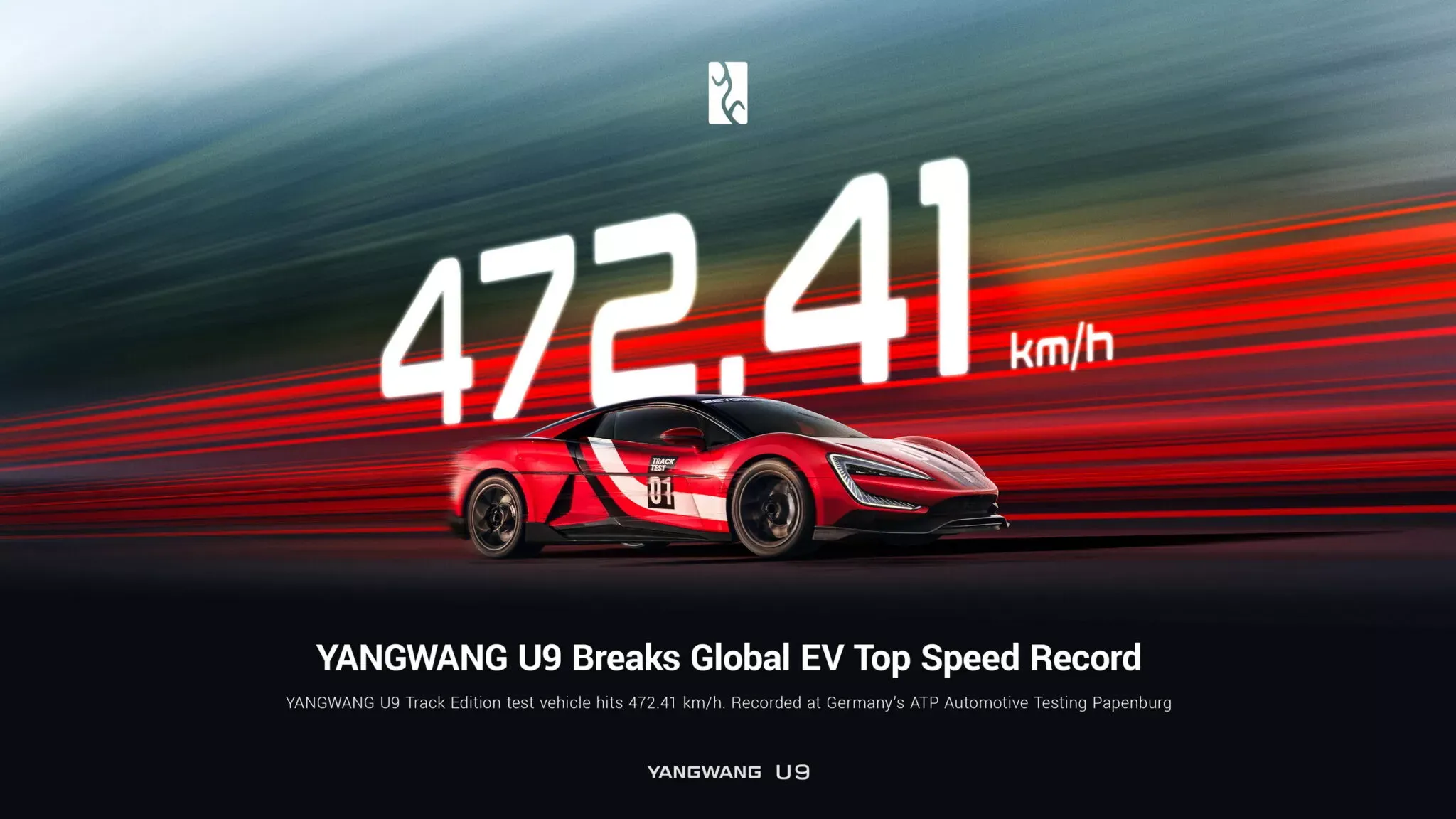
How did the Yangwang U9 break 472.41 mph in testing?
The U9 Track Edition uses four high-revving electric motors (around 30,000 rpm) with a combined output of over 2,960 hp, managed by a torque vectoring system that keeps the car stable when air tries to pull it off course. The result: a measured top speed of 472.41 mph on a high-speed track, with brutal acceleration and surprising stability.
The body itself has been adjusted for downforce and reduced drag, with custom semi-slick tires and even provisional sealing details to optimize airflow. For a comprehensive view of the special version and project context, check out our analysis of the Yangwang U9 Track Edition.
What’s behind the 1200V platform and cooling system?
The secret lies in a 1200V architecture designed for mass production, reducing electrical losses and heat buildup, combined with thermal management built for extreme stress. In simple terms: less heat, sustained power, more efficient recharges, and repeatability on fast laps.
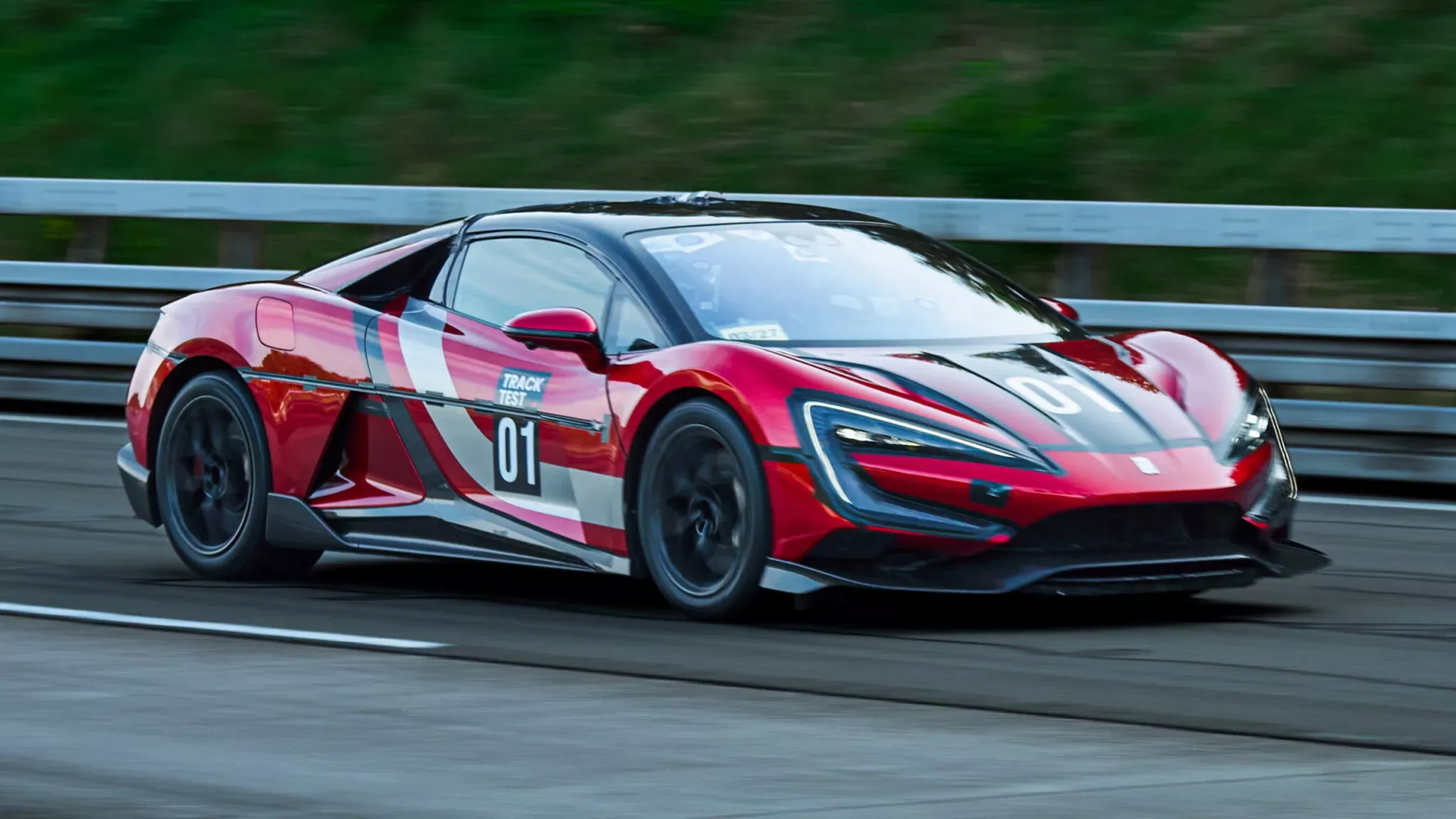
This electric platform communicates with active suspensions (DiSus‑X) and control software that reads the asphalt and air in real time. The high-revving motor is key to this equation; learn how the brand achieves insane rpm and power figures in the article BYD: 30,511 rpm and 778 hp per unit.
Quad-motor 3,000 PS: how does the e4 deliver traction and control?
Each wheel has a dedicated motor (up to 555 kW peak per motor in the Track Edition). The e4 system measures grip, steering angle, and body roll, and distributes torque instantly. It’s the “torque ABS”: instead of just braking, it accelerates the appropriate wheel to turn, stabilize, and propel the car forward.
In numbers: power-to-weight ratio of about 1,200 hp per ton, independent vectoring, intelligent suspension, and an aerodynamic package tuned for high speed. Want to see how other hyper-electric cars are pushing limits? Check out the AMG GT XX Hyper EV and its records.
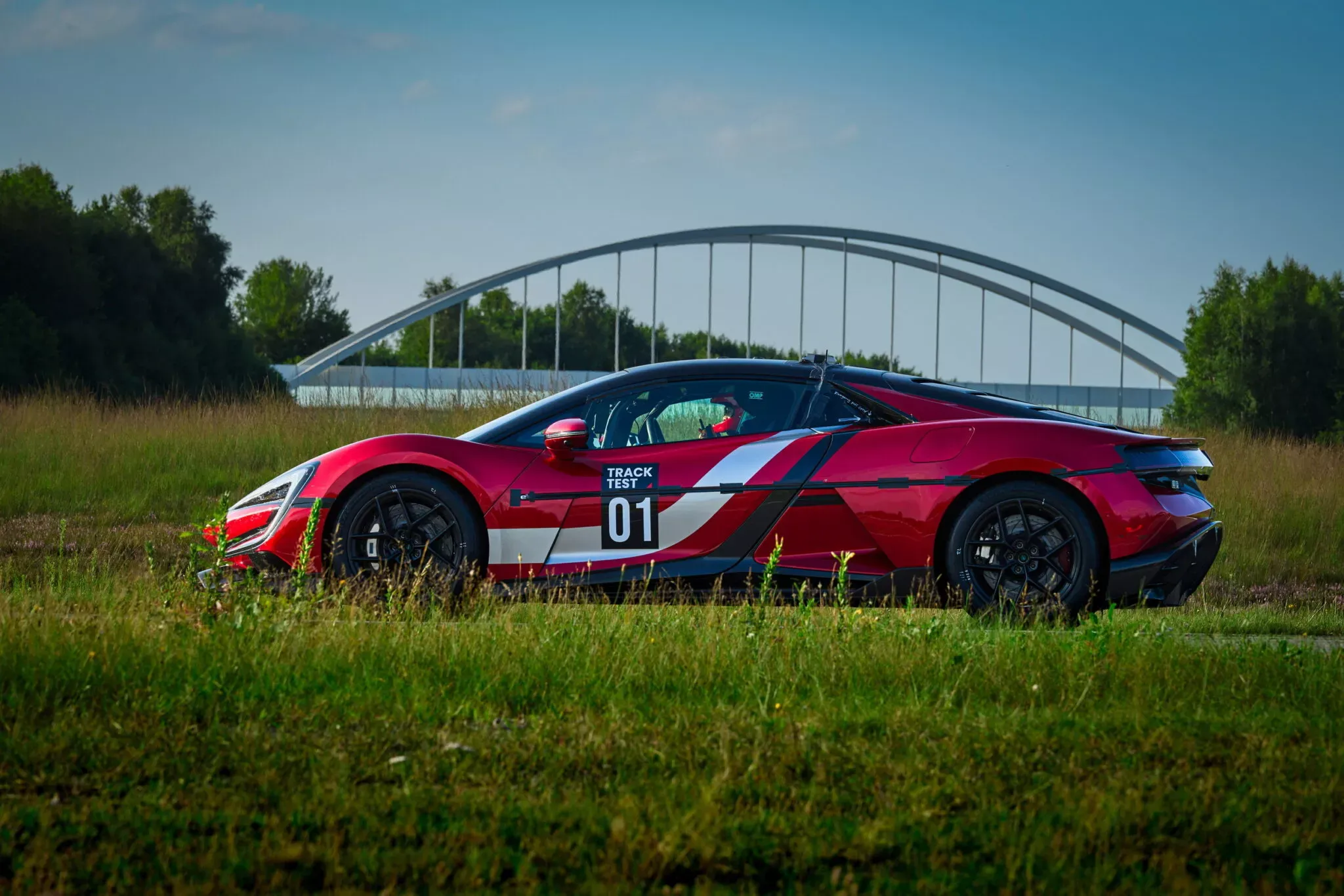
U9 vs. rival electric hypercars: who rules in speed?
The U9 has taken the top spot for maximum speed among EVs, surpassing the figure recorded by a European rival with extreme electric traction. In overall power, it also ranks at the top. For reference, check out the achievement of the Rimac Nevera R and its multiple records.
In acceleration and raw power, the competition remains fierce among hypercars that prioritize “time attack”. Among the heaviest in the segment is the Lotus Evija with 2,012 hp, which may not aim for over 470 mph, but pursues record-breaking lap times.
Quick comparison: key numbers
- U9: 472 mph, ~3,000 hp
- Nevera R: 431 mph, 1,989 hp
- Evija: 2,012 hp, lower vmax
- Battista: 1,900 hp, ~around 350+ mph
- GT XX: records and endurance
When will it arrive, how much will it cost, and what to expect from future versions?
The production U9 is a two-seater with four motors (240 kW each, 960 kW total), 1,288 hp, and 1,680 Nm torque, going from 0 to 60 mph in 2.36 seconds. The base price is around USD $235,000, depending on taxes and configuration. For street use, the calibration is less aggressive than the Track Edition’s.
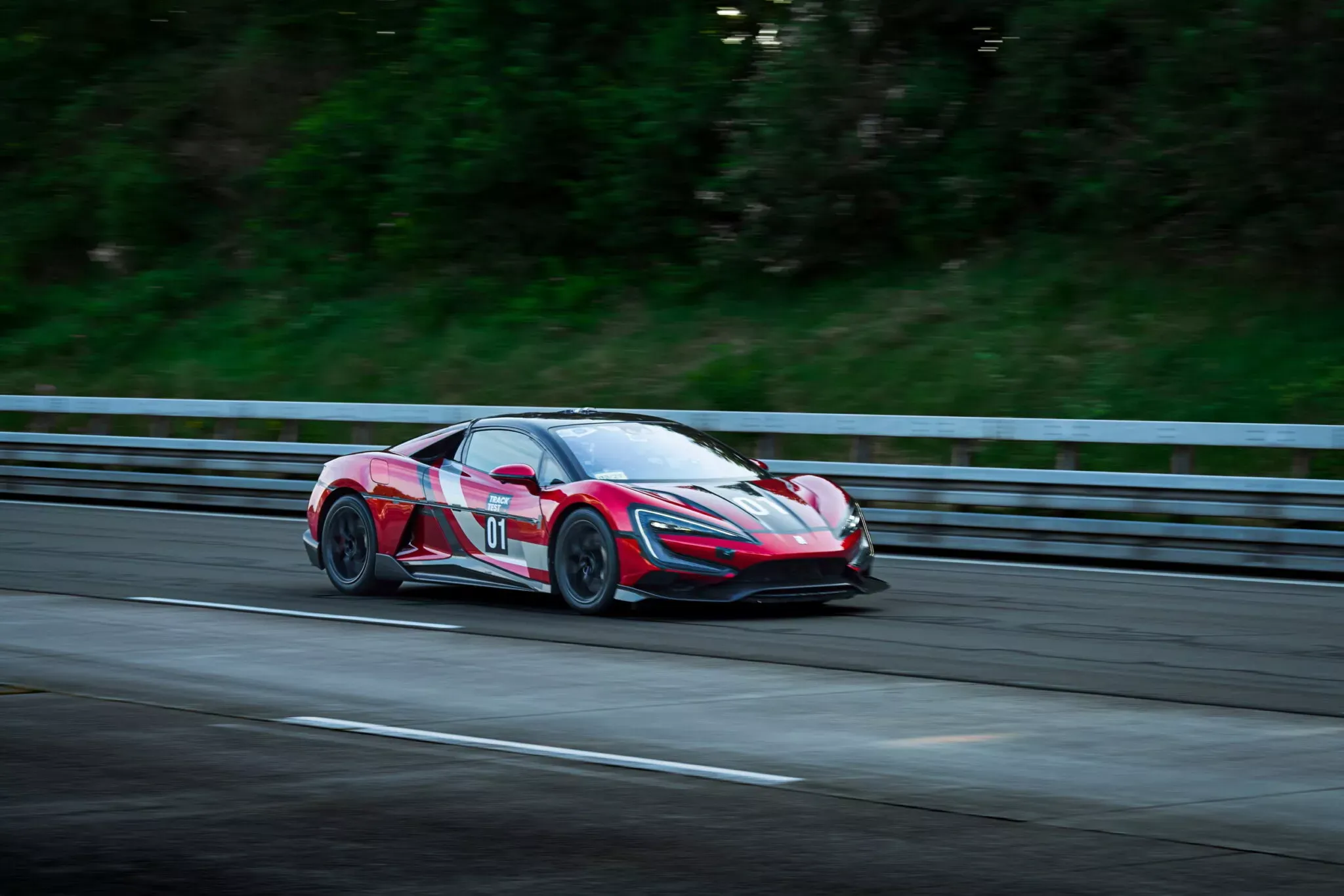
There are orders for a new variant with peak motors of 555 kW per wheel — bringing the car closer to a racing catalog and widening the gap over rivals. The Yangwang lineup is expected to benefit from the brand’s rapid innovation pace, reinforced by initiatives like ultra-fast chargers and advances in software and hardware.
A quick look at the record: why does it matter
- Scalable 1200V platform
- Quad-motor with vectoring
- Race-grade thermal management
- Functional aerodynamics
- DiSus‑X active suspension
- Custom semi-slick tires
Quick FAQ about the BYD Yangwang U9
- What is the recorded maximum speed? 472.41 mph in the engineering test vehicle of the Track Edition.
- What is the combined power? Over 2,960 hp in the Track Edition; 1,288 hp in the current production version.
- What makes the 1200V platform special? Less losses, less heat, more sustained power, and more efficient recharging.
- Is it faster than main rivals? In top speed, yes. In acceleration/lap times, the lead varies depending on track and setup.
- How much does it cost? Around USD $235,000, varying by market, taxes, and options.
What’s your verdict on the U9’s new record? Leave your comment: do you want higher max speed, faster lap times, or a balanced street-ready setup?
Author: Fabio Isidoro
Founder and editor-in-chief of Canal Carro, he dedicates himself to exploring the automotive universe with depth and passion. A car and technology enthusiast, he produces technical content and in-depth analyses of national and international vehicles, combining quality information with a critical eye for the public.

